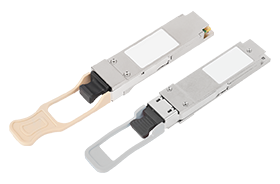Cable & Wire | High quality and excellent service at reasonable prices.
info@zion-communication.com
Author: James Publish Time: 08-08-2025 Origin: Site
In the field of high-speed data transmission, 100G optical modules have become indispensable in data centers and telecom networks thanks to their exceptional speed and performance. This article explores the ETU-LINK 100G BIDI (Bidirectional) 80KM Optical Module, focusing on its product overview, key features, working principle, and application scenarios.

The 100G QSFP28 ZR4 BIDI is a single-fiber optical transceiver designed for 80 km optical communication applications. Unlike traditional dual-fiber modules, a single-fiber module uses only one fiber strand for both transmitting and receiving optical signals, reducing fiber infrastructure requirements. It features a QSFP28 form factor and a simplex LC connector for compact and efficient integration.
Speed & Transmission Distance: Implementing a data rate of 103.125 Gb/s (25.78 Gb/s for each channel) and achieving reliable transmission to 80 km longer than classical cases with applied KR4-FEC (Forward Error Correction).
Optical Components: The entire system comprises a LAN wavelength division multiplexing (WDM) electroabsorption modulated laser diode (EML) transceiver and a PIN receiver with a semiconductor optical amplifier (SOA) unit operating within the 1273 nm to 1309 nm wavelength range.
Power & Thermal Performance: It offers low power consumption, indicating that it is designed for commercial-level use.
On the sending side, the section converts the four channels of the parallel stream to the same clock using retiming and then sends it to each laser driver. Each driver operates an LC-WDM EML laser, which has a central passband at 1273 nm, 1277 nm, 1282 nm, 1286 nm, 1296 nm, 1300 nm, 1305 nm, and 1309 nm. All optical channels are fused into one single-mode fiber through a standard LC simplex connector.
On the receiving side, an optical demultiplexer splits the incoming multiplexed signal into four distinct channels. The SOA (Semiconductor Optical Amplifier) amplifies the signals, which are converted back to an electrical current by the PIN photonic diodes, then amplified by the TIA (transimpedance amplifier), and finally supplied to the output drivers. The I²C management interface and electrical interfaces in this module are hot-pluggable, with low power consumption.
This is a perfect situation for the 100G ZR4 BIDI optic module with high-speed and long transmission characteristics:
Data Centers – Handles immense data transfer, runs cloud systems, and links computing facilities.
Telecom Networks – Provision for permanent, broadband, high-capacity connections between 4G/5G base stations, IoT backhaul, and other applications.
Due to its cutting-edge capabilities, strong dependability, and energy efficiency, the 100G BIDI 80KM offers a superior alternative for industries requiring long-distance and high-speed data transmission. The advancement in optical networking technology will make this type of transceiver an even more crucial component in the era of high-speed fiber optic networks.

James is a technical manager and associate at Zion Communication.
Specializes in Optical Fiber communications, FTTH Solutions,
Fiber optic cables, ADSS cable, and ODN networks.
james@zion-communication.com
+86 13777460328
